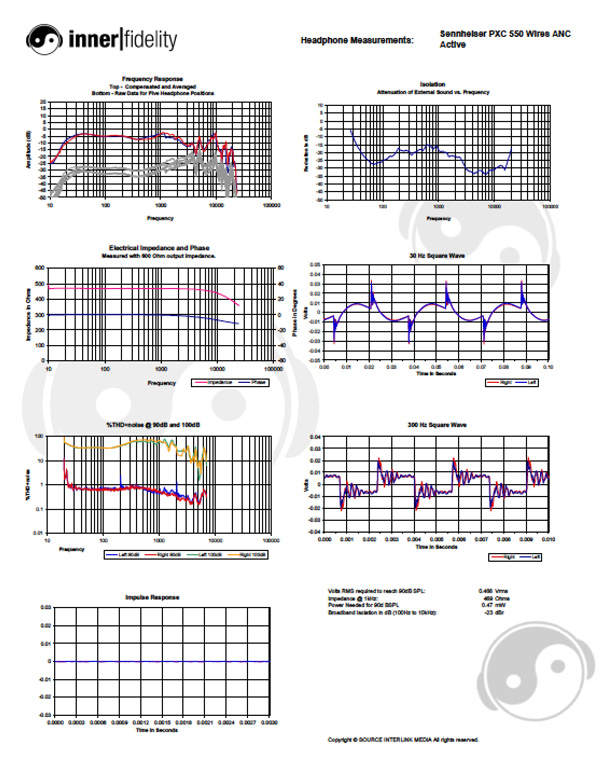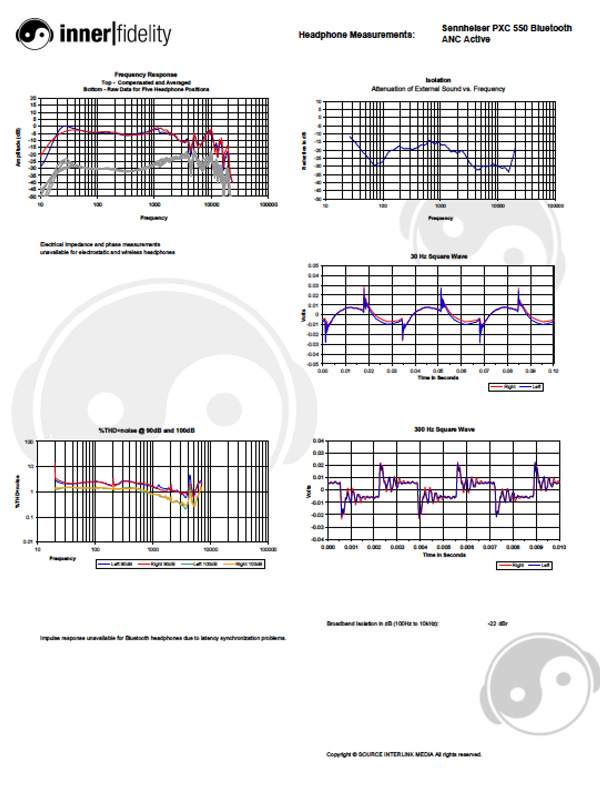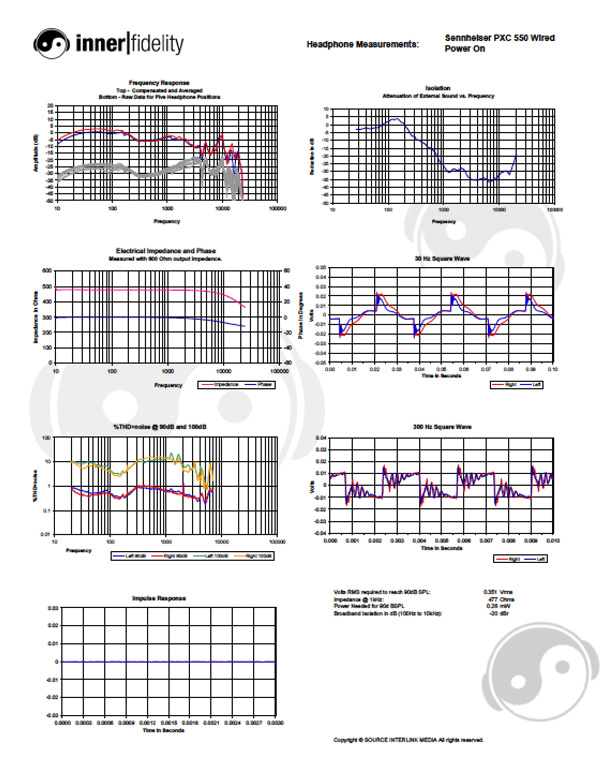| Columns Retired Columns & Blogs |
Sennheiser PXC 550 Noise Canceling Bluetooth Headphones Measurements
Measurements Wired ANC Active


Click on graphs image to download .pdf for closer inspection.
Measurements Bluetooth ANC Active

Click on graphs image to download .pdf for closer inspection.
Click on graphs image to download .pdf for closer inspection.
Couple of notes here right off the bat: I had a hard time measuring these cans. I think there may be some processing going on inside the headphones in wired mode. My AP tester simply didn't want to trigger on the MLS signal in wired mode. This is not unusual if there's any sort of other digital manipulation going on. Also, there appears to be some volume limiting going on in wired mode, possibly some soft clipping at high levels, that seems to indicate very high distortions. Though they sound a somewhat hard at high levels in wired mode, it certainly didn't sound as bad as indicated by measurements here. I'd look at the 90dB distortion measurements as a better indicator of performance.
If you compare the bass response in raw plots and 30Hz sqare waves, you can see that with ANC off the headphone behaves much more like a normal sealed headphone than with ANC on. With ANC on the bass tonal profile is flattened with a gentle rise in the bass until it falls off at 25Hz. However, in the 30Hz square wave plot with ANC on you can see the significant sway back of a bass that's going out of phase. This typically results in a looser sounding bass response, which I did hear in listening.
The following comments apply to all modes of operation unless otherwise mentioned.
Raw frequency response plots show a steady rise from 400Hz to 3.5kHz. The Harman target specifies a more gently rising response to 1kHz and then a quicker rise to the 3.5kHz peak. Most headphones show a flat response to about 1kHz and then a rapid rise to 3.5kHz. I think most headphone enthusiasts have gotten used to the latter response with most headphones and feel the Harman target sounds too forward. After spending a lot of time listening, I tend to feel the Harman target is actually more neutral and delivers a more present sound to vocals. I find the PXC 550 response in this area to be too forward, but not by a lot.
The problem I have with this headphone starts at the spike at 5kHz and ends at about 12kHz. After 3.5kHz response should steadily drop off—in fact, many headphone makers will drop the response above 3.5kHz very quickly to avoid any piercing character. The average response between 8kHz and 12kHz should be roughly at the lowest level in the midrange; with the PXC 550 it's about 3-5dB too high.
More troubling is that 300Hz square wave leading edges and subsequent ringing is very rough looking and rather long lived. This is not a good sign. Though it's not nearly as bad as a lot of headphones I've heard, the PXC 550 does have a mildly piercing character that gets worse the louder the outside environment.
Noise canceling at -22dB is good, but not as good as the Bose QC35 at -28dB.
- Log in or register to post comments





































